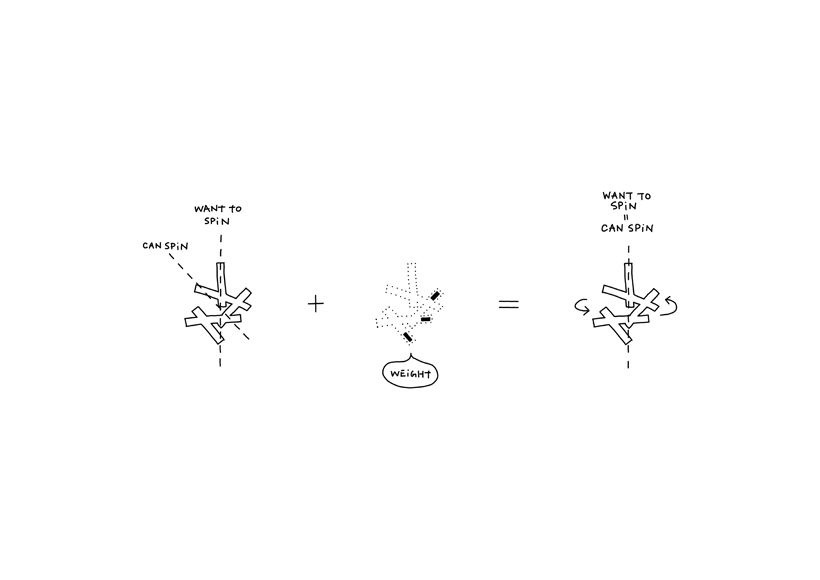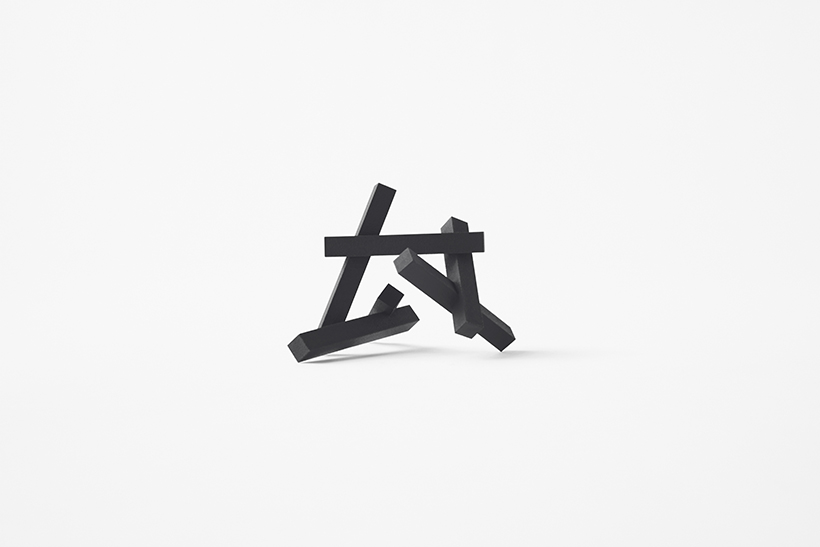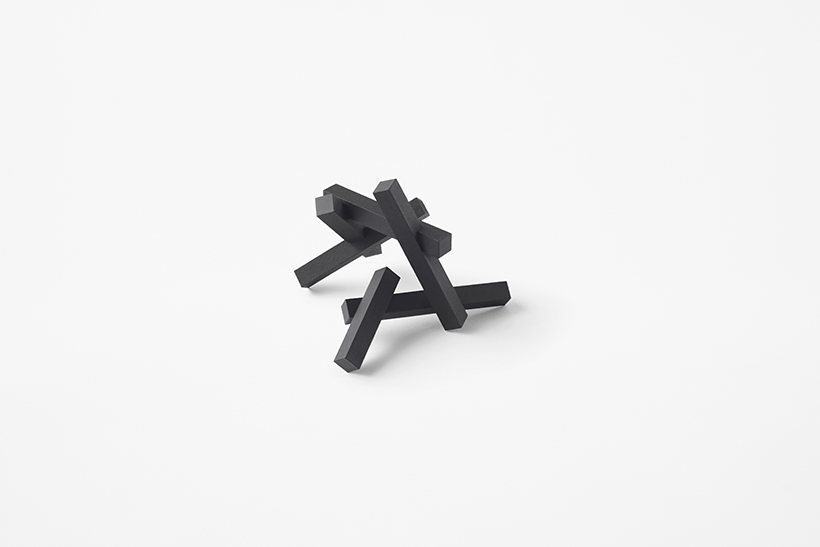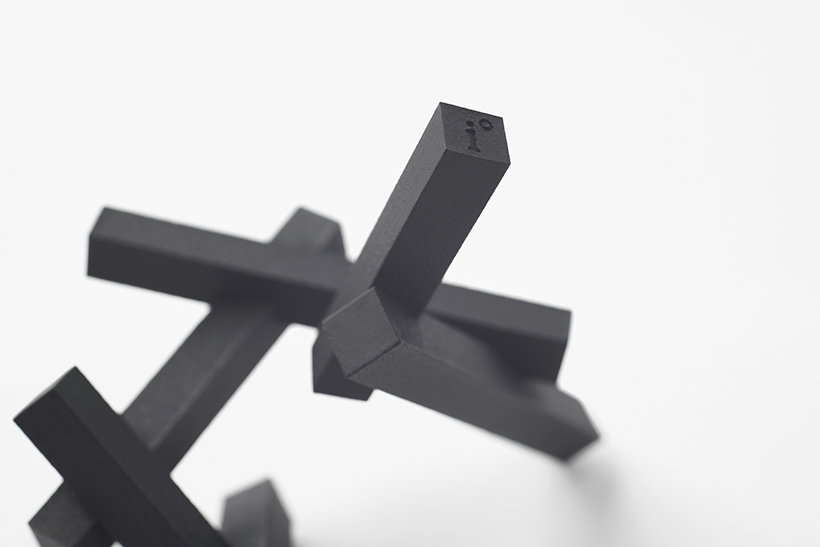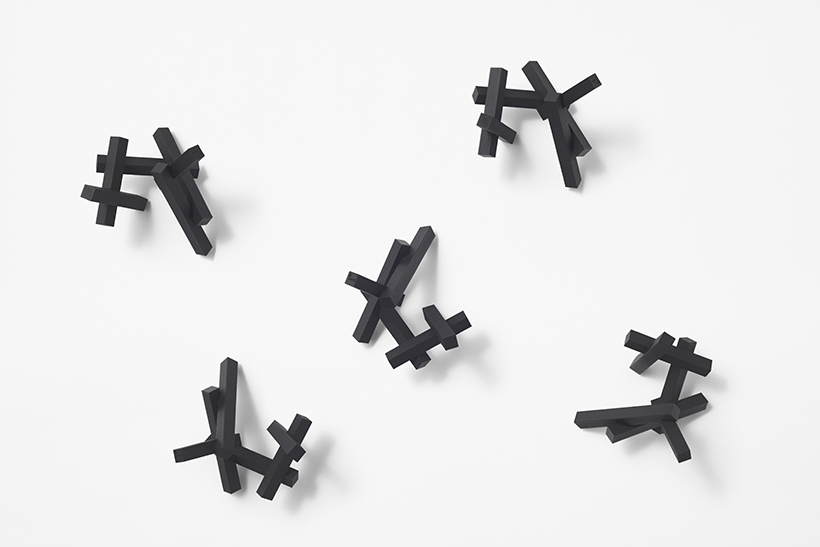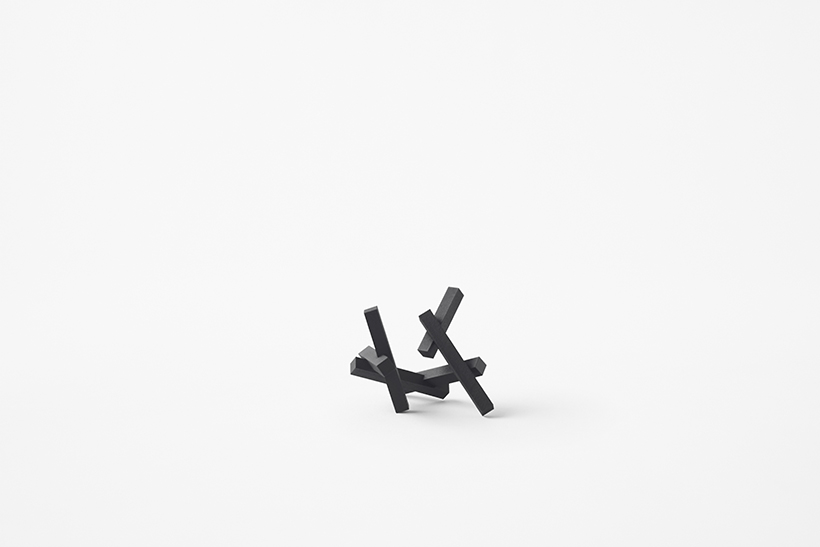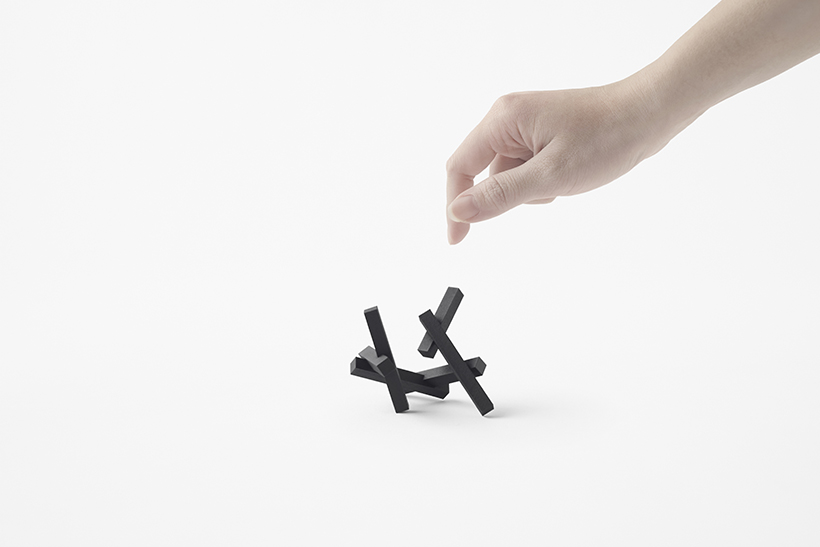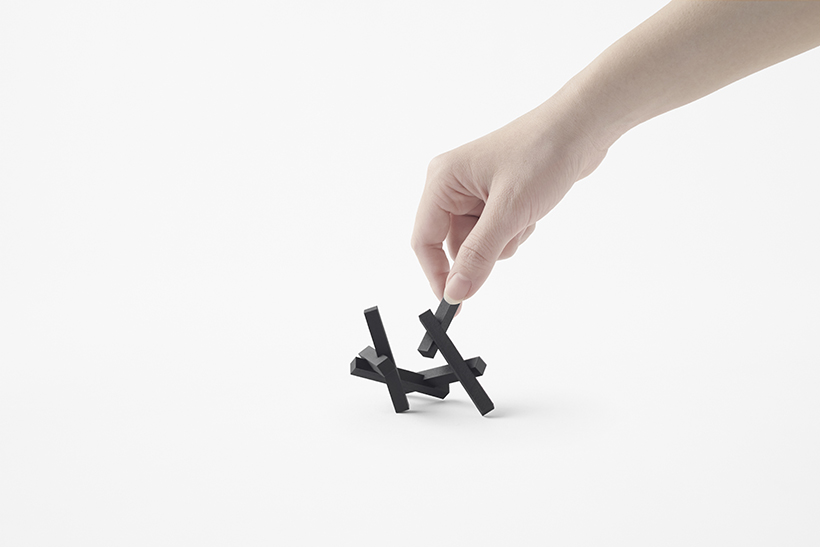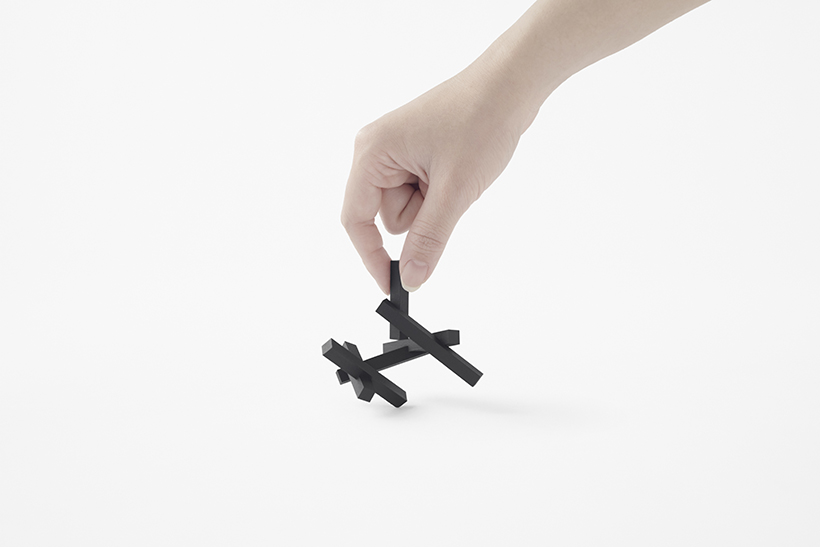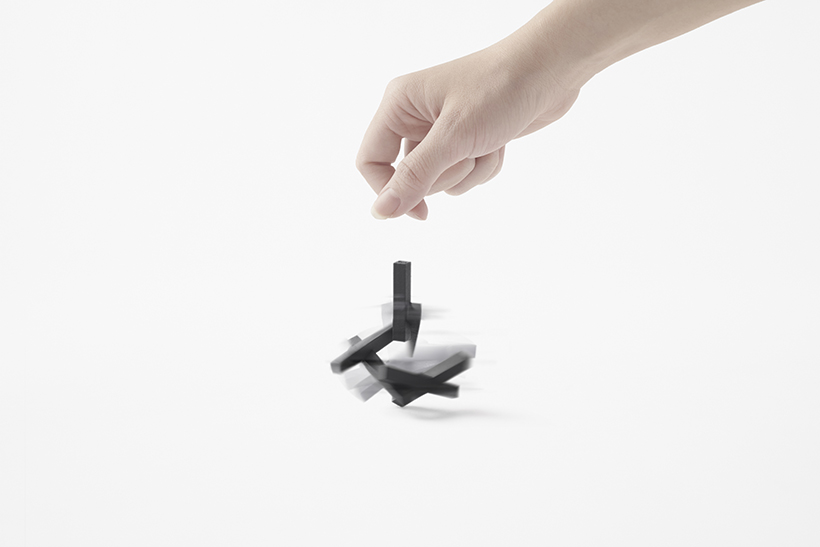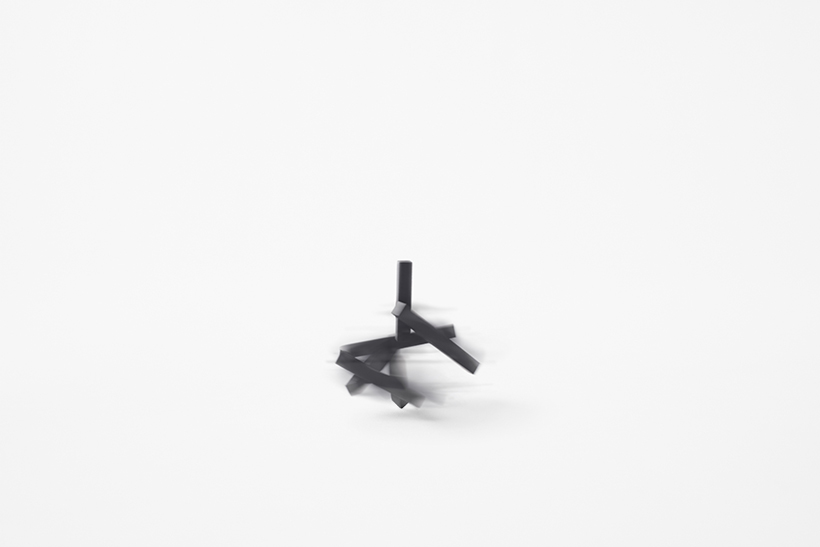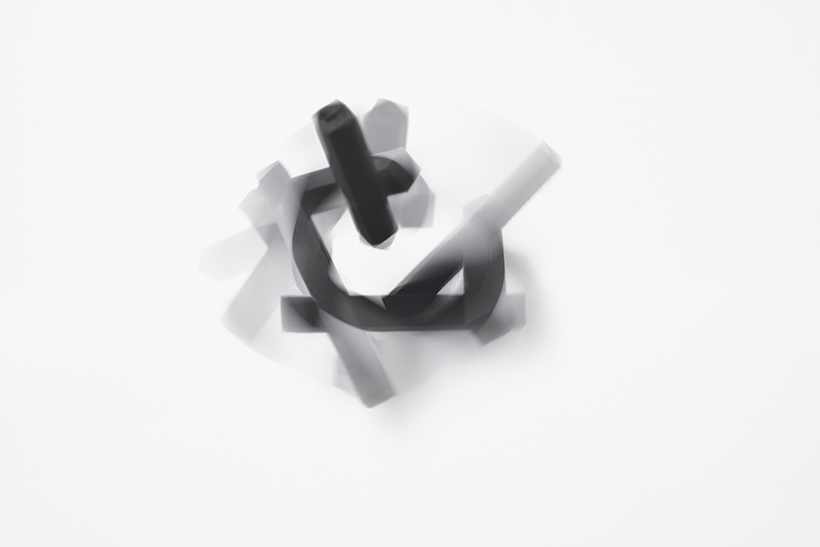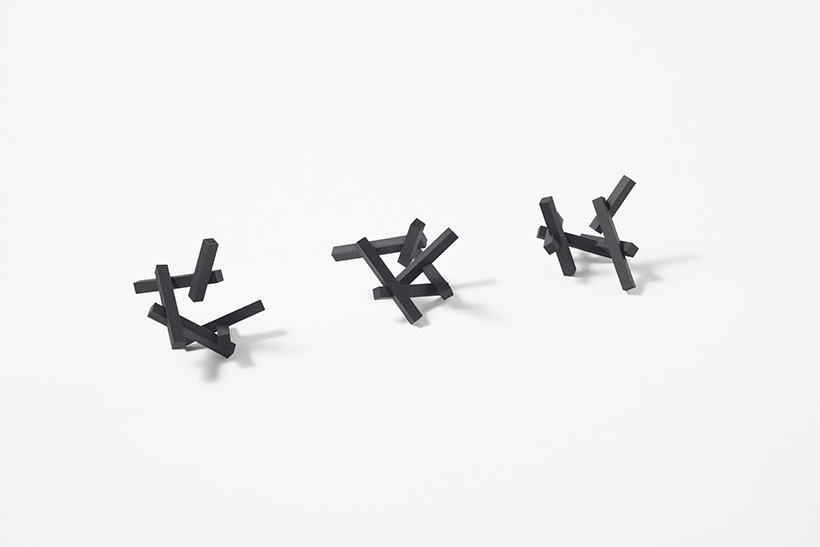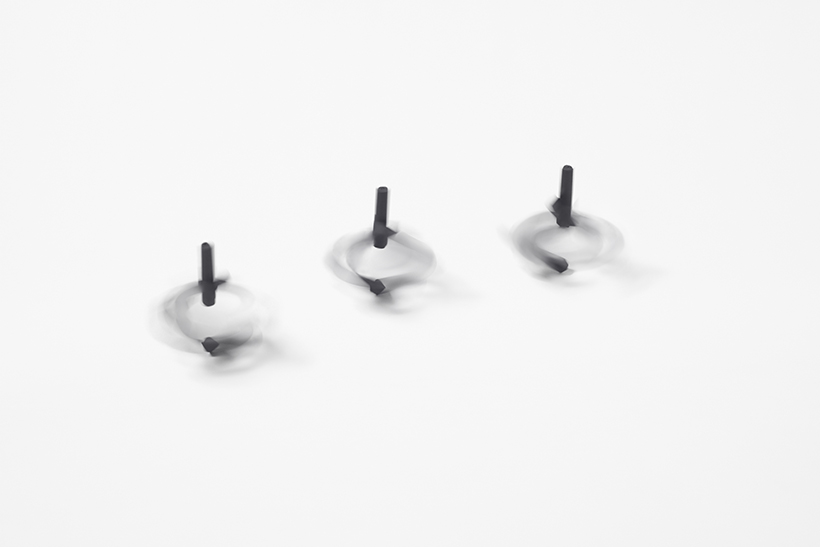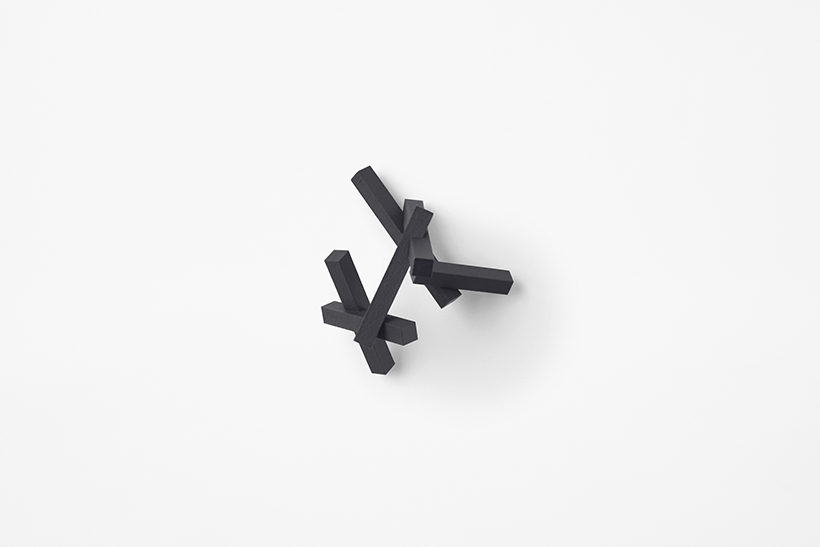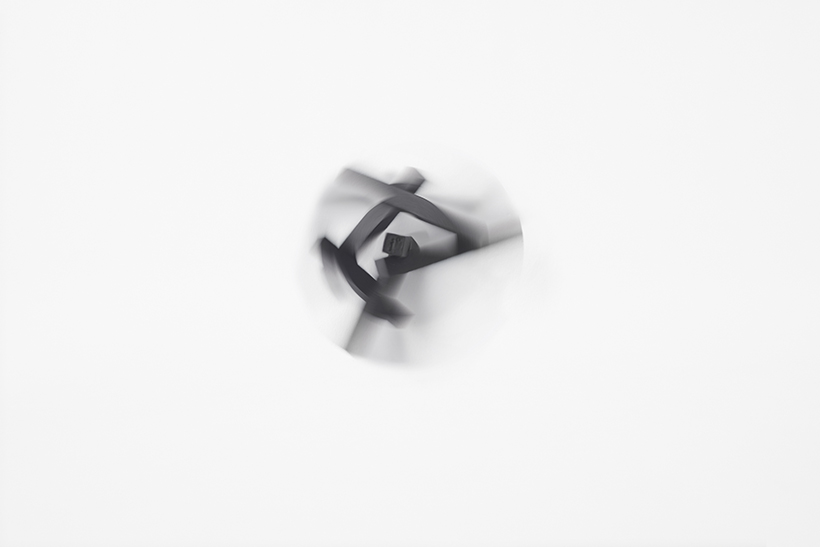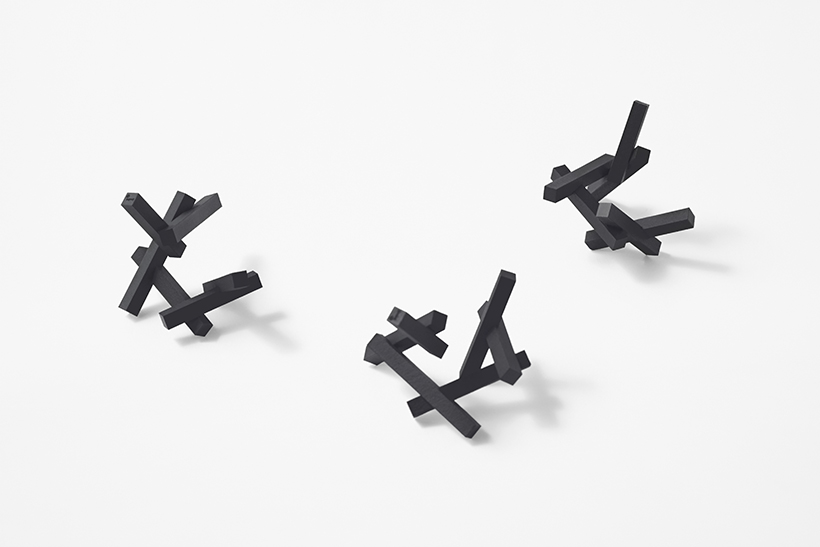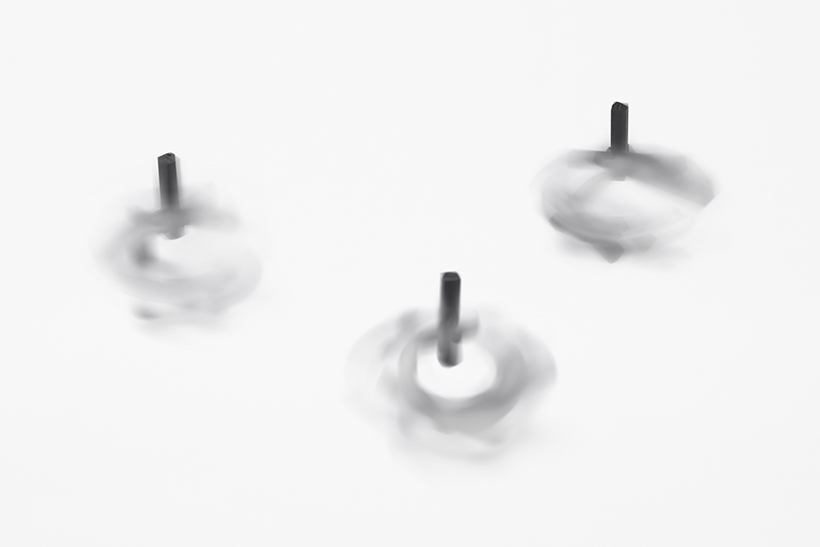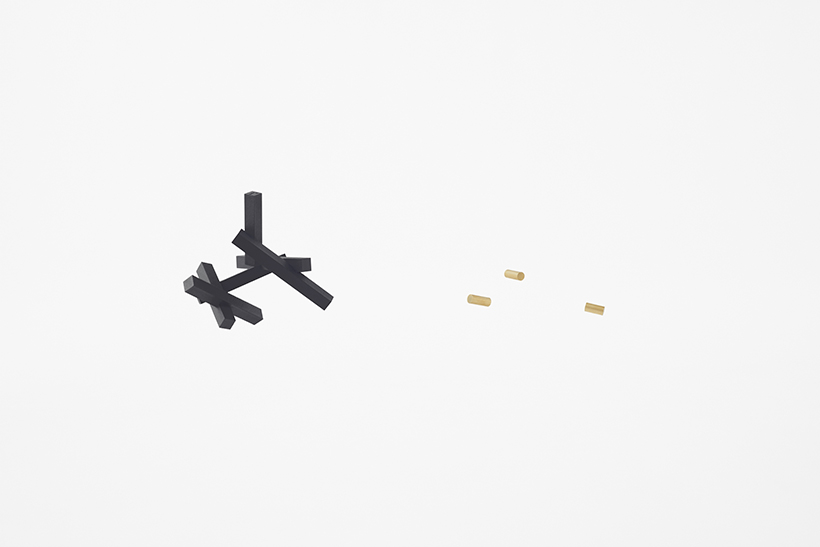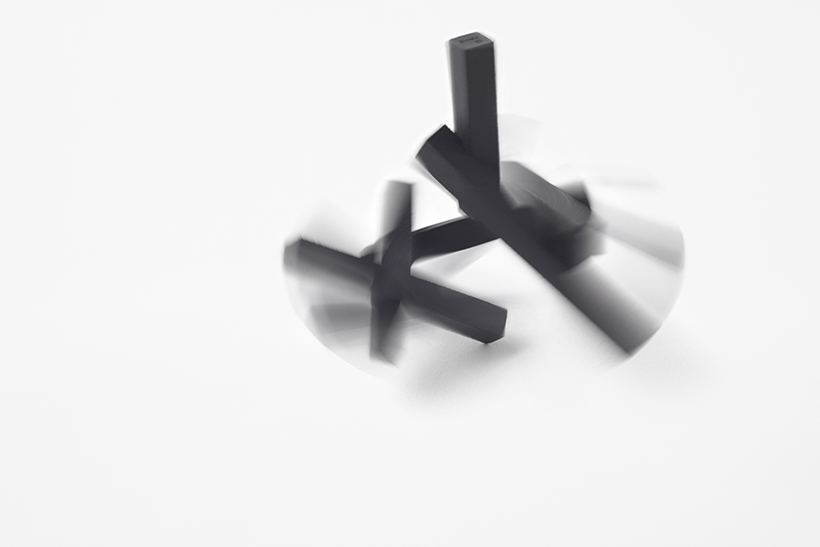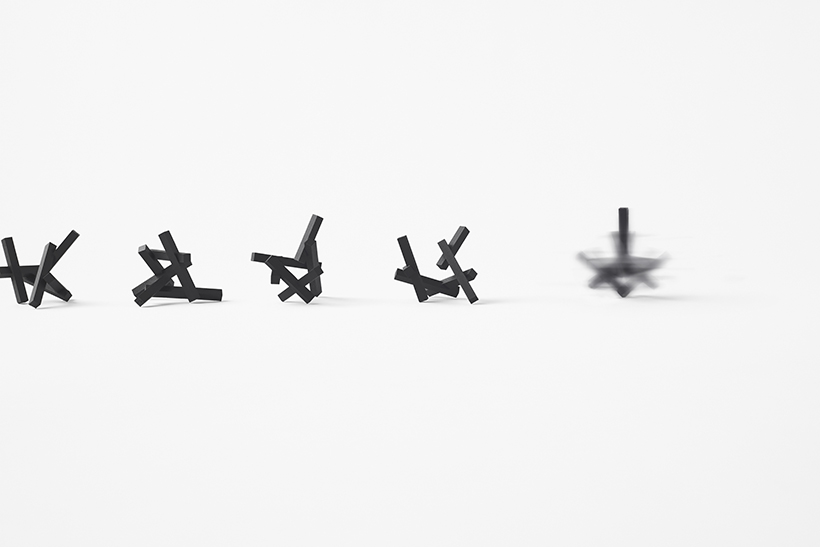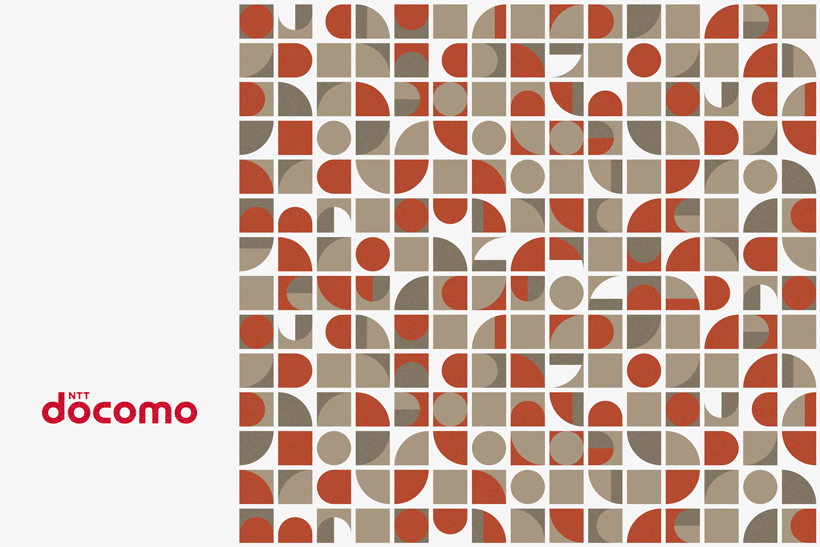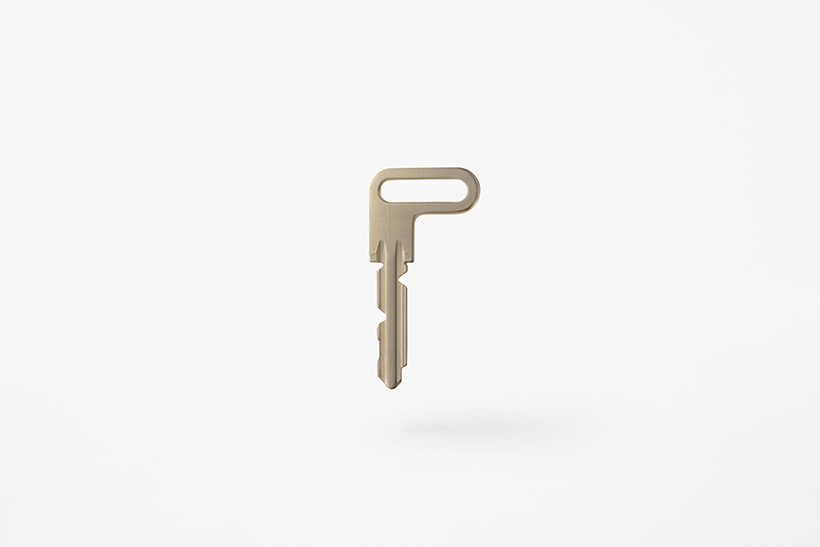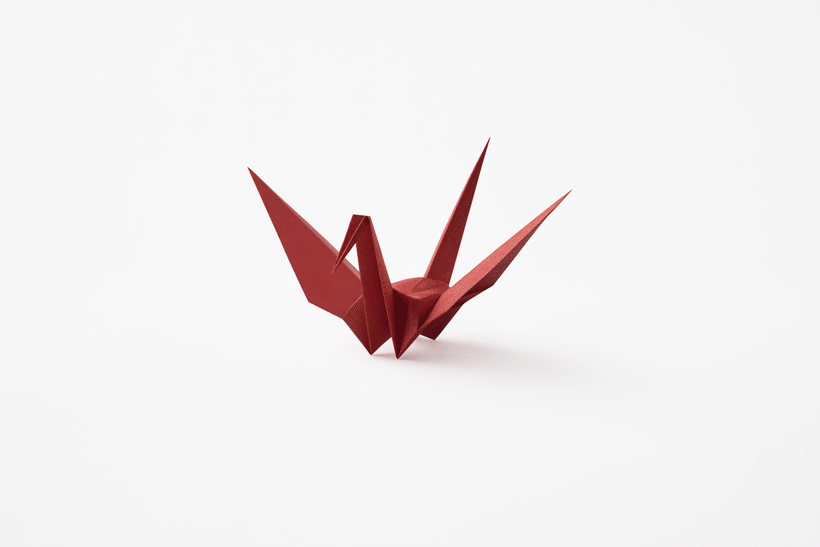random-top
Perusing published reports and books to study conditions that would make an object spin cleanly made something clear:
matching the axis on which the object is designed to spin, and the axis on which it will spin most easily,
is as important as conditions like center of gravity, weight, and tip shape.
The axis on which the object is designed to spin is essentially a line connecting the point at which it touches the underlying surface and the handle by which it is spun. It is, more or less, the interface through which someone intends to spin the object.
Meanwhile, the axis on which it will spin most easily is also called the major principal axis of inertia. Such a state exists for any object anywhere.
Making these two axes one and the same prevents immediate wobbling and enables the object to spin longer.
What this means, conversely, is that with these four conditions met, aesthetic symmetry becomes less relevant.
That being the case, it was decided to make a form composed of random straight lines that appears most unlikely to spin, with no apparent symmetry, no rotating body or curves, and turn it into a spinning top by placing some brass weights inside.
Using a computational procedure known as a genetic algorithm, the four conditions were evaluated—center of gravity, weight, tip shape, and the axis by which the top is both designed to be spun and easiest to spin, so as to find the optimal combination of the object’s shape and the weights’ position and amount.
With a 3D printer to physically verify and validate results to be reflected in the program, and a hundred combinations attempted over 200 times, a top capable of spinning for more than 10 seconds was produced.

